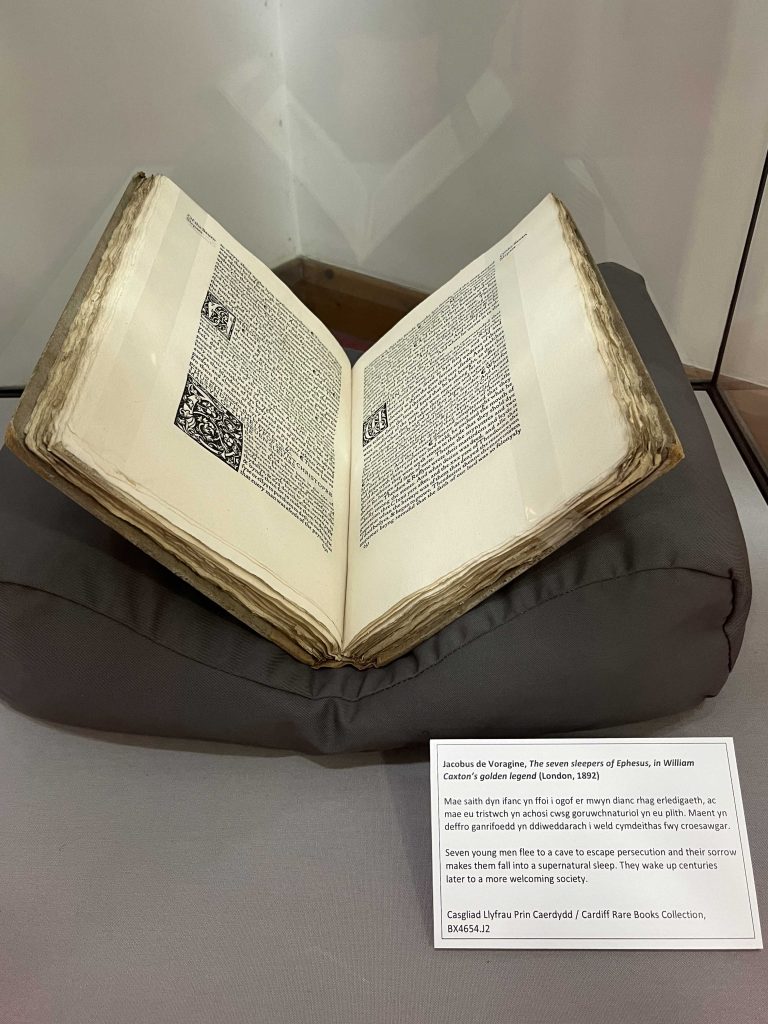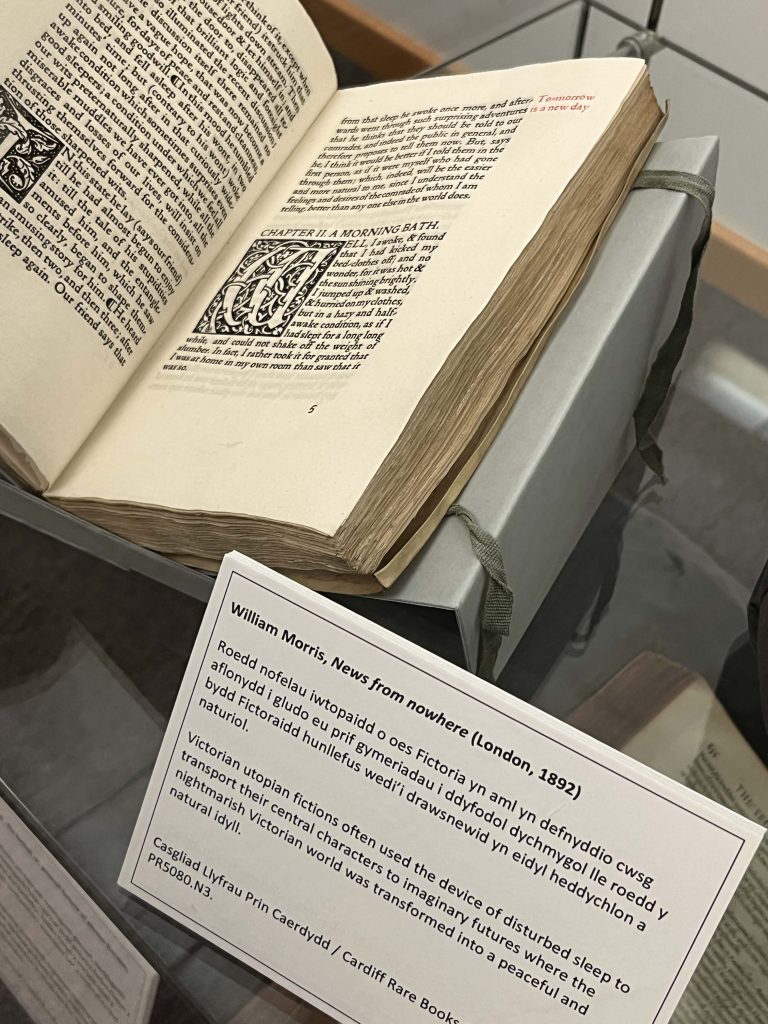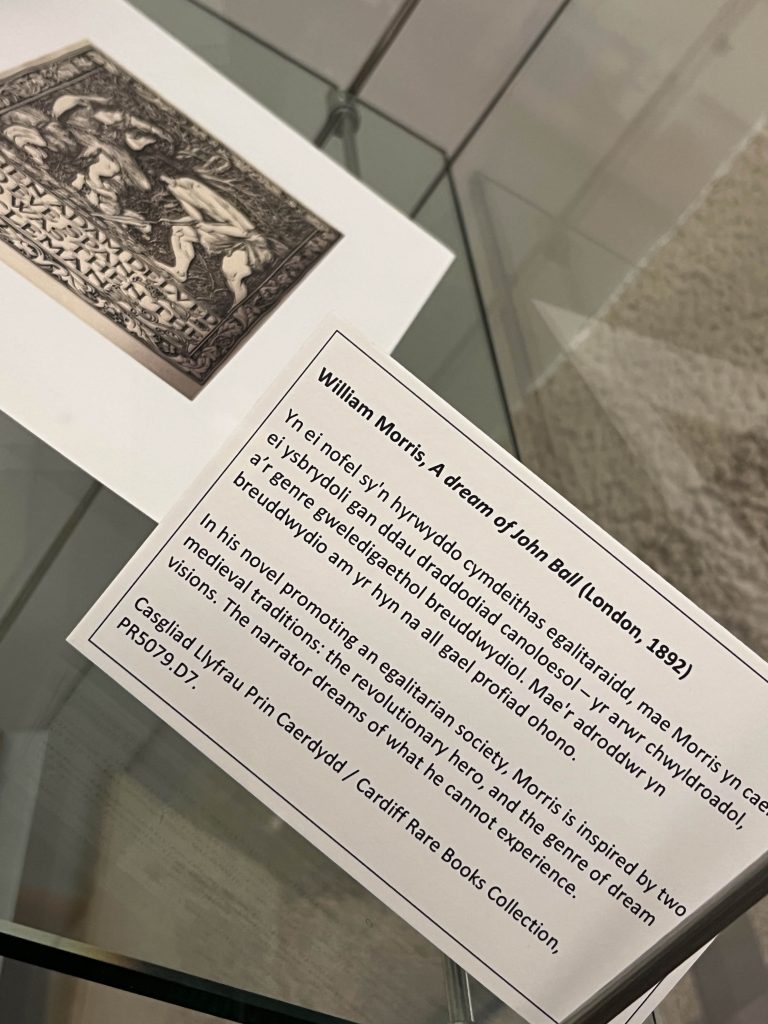On Tuesday I paid a visit to Cardiff University’s Special Collections and Archives to see their pop-up exhibition on sleep and dreams. This display presented a carefully curated selection of old and rare books and other printed material from the archives presenting a literary history of sleep and dreams. They also had a gorgeous set of promotional bookmarks and postcards, which I helped myself to.
It was fascinating to see how so many of our contemporary anxieties around sleep have counterparts in the mediaeval period. How much sleep is enough? How do we ensure we sleep well? How can we avoid bad dreams? These seem to be perennial questions. While most modern people aren’t concerned about witches’ curses causing our insomnia, many of us would attest to the almost supernatural power of the smartphone and tablet to bewitch us and steal away our slumber.
The exhibition also pointed me in some new directions which may not fit into my current research into the sociological aspects of poor sleep but could well spark some further investigations in a related area – the link between sleep, dreams and political desire. There’s the trope of the sleeper who wakes from a magically prolonged slumber into a new, utopian society. And the legends of past heroes who are not dead, but sleeping, and will return to save their people when the need is sufficiently dire (this category apparently includes Owain Glyndwr, the last true Prince of Wales). These politically-charged stories combine the visionary aspects of dreams as well as the mysterious, not-quite-alive nature of being asleep (two states that are available to all regardless of social station), to create positive revolutionary propaganda.
A big “diolch” is due to Sara Huws, Civic Engagement Officer, Libraries and Archives at Cardiff University, for taking time to show me the collection and for an inspiring chat about her research and interests.
Some images from the exhibition


